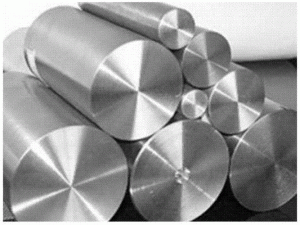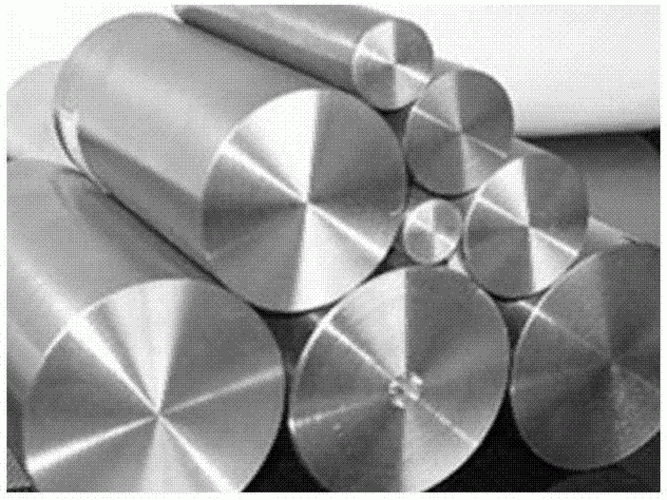Tantalum is a sensible choice whenever high corrosion resistance is required. This platinum-gray-colored metal has a density of 16.6 g/cm3 which is twice as dense as steel. With its combination of specific physical and chemical properties, tantalum is an important product in many applications. Do you know how tantalum is made?

Tantalum smelting process
Tantalum niobium ore is the main raw material for the production of tantalum, but it is often associated with a variety of metals, so the main step is the decomposition of tantalum smelting concentrates, purification, and separation of tantalum and niobium, producing the pure compound of tantalum and niobium, finally, we can produce metal.
To achieve ore–decomposition, we can use the hydrofluoric acid decomposition method, sodium hydroxide melting method, and chlorination. The method can be used in the separation of tantalum and niobium by solvent extraction, fractional crystallization, and ion exchange method.
Preparation of tantalum
The preparation of tantalum is the process of reducing pure tantalum compounds to metal tantalum. The raw materials are five tantalum oxide, tantalum chloride, five tantalum fluoride, and fluoride (such as K2TaF7,). The reducing agent is sodium, magnesium, other active metals, and carbon and hydrogen. The melting point of tantalum is as high as 3669K, so it is a powder or spongy metal after reduction. It is necessary to further smelting or refining, in order to get dense metal.
The tantalum preparation methods are sodium thermal reduction, carbon thermal reduction, and molten salt electrolysis. Sodium thermal reduction of potassium tantalate is the most widely used method of tantalum production in the world.
The tantalum powder has a complex shape and a large specific surface area. Carbon thermal reduction of five oxidation of tantalum has been an industrial method for the production of tantalum, but because the purity of the product is not high enough, is not as widely used as the sodium reduction method. The molten salt electrolysis method is divided into two ways: electrolyte electrolysis and oxygen-free electrolyte electrolysis. Molten salt electrolysis can only produce metallurgical grade tantalum powder. Five hydrogen fluoride reduction is considered to be one of the most promising methods for tantalum production, but it has not been used in industrial production because of the high requirements of equipment material and environmental protection.
The majority of tantalum powder is directly used for tantalum capacitors in the electronic manufacturing industry, so the tantalum milling process, such as the preparation of tantalum metal is also from tantalum and tantalum powder by vacuum heat treatment, capacitor grade tantalum powder hydrogenation method category.
Sodium thermal reduction process
Sodium metal thermal reduction method is an important method for the production of tantalum powder, is the main method of industrial production of tantalum powder (including metallurgical Ta powder), the metal tantalum powder particle shape is complex, large surface area, suitable for anode material for tantalum electrolytic capacitors, by electron beam melting, vacuum arc melting of tantalum or tantalum sintered in vacuum refining, made of high purity tantalum ingot or rod, and then processed into a variety of tantalum.
In order to obtain high purity tantalum powder, in addition to the main raw material, sodium and potassium fluorotantalate diluent (or NaCl+KCI), sodium chloride (argon or helium) must reach the required purity, must also be dehydration treated strictly at different temperatures in advance. It is also necessary to carry out the vacuum heat treatment at the temperature of 598 ~ 648K. After vacuum heat treatment, potassium fluorotantalate can remove the residual organic matter and hydrogen fluoride, and become the potassium fluorotantalate grain refinement, obtaining fine tantalum powder in reduction.
Since the 1970s, it has been widely used to increase the specific capacitance of tantalum powder. The commonly used doping agent is phosphate, which can be mixed before or after the crystallization of potassium fluoride and can be added before the vacuum heat treatment of tantalum powder. The doping can prevent the sintering of tantalum powder during the sintering of the tantalum anode block, thus avoiding the reduction of the specific surface area of the tantalum anode block. We can remove oxides from metal sodium with the metal-ceramic filter or cold trap method.
The process of reduction of potassium and sodium fluoride in an inert atmosphere at 1153 ~ 1173K temperature and the reduction products are metal tantalum powder, potassium fluoride, sodium fluoride, and diluent which are not involved in the reaction.
Before the 1950s, the solid metal sodium and potassium fluorotantalate layer was placed in the reactor of bomb explosion reduction reaction, although the product of tantalum powder is fine particle size, large surface area, oxygen, and carbon content is high, no practical value.
In this way, the reaction period is too long, the product size is coarse, and can only be used as 3000/uF.V/g low volume tantalum powder. After improvement by liquid-solid mixed loading reaction of sodium-based reduction, the production cycle is shortened 3/4 than gas-liquid reaction, tantalum powder volume increased by more than 30%, but still not ideal will be phased out.
With tantalum capacitors being small and micro, the corresponding need to adopt more surface area tantalum powder, mainly used in the liquid reduction, mainly supplemented by mixing sodium, doping technology, the volume rate of tantalum powder increased to 1000uF-V yield every year.
The fluoride was removed by dipping, and then washed with HCl18% and HF1% solution at 1 2H for 363K, then washed with pure water and dried at 353K temperature. For the preparation of capacitor grade tantalum powder, tantalum powder should be the original size distribution, vacuum heat treatment (see tantalum powder vacuum heat treatment), crushing and screening and modulation post-processing, if necessary, will also increase the magnesium reduction deoxygenation, pickling, washing and plastic processing, in order to obtain high quality and low and high specific capacitance of capacitor grade tantalum powder.
It is expected that the continuous improvement and development of tantalum powder produced by sodium reduction is the result of the miniaturization, miniaturization, and cost reduction of electronic products. Since the 1960s, the specific capacitance of tantalum powder has been increasing, and the capacitance ratio of tantalum powder has reached 22000~26000uF•V/g in the United States, Japan, Germany, and other countries.
Please visit http://www.samaterials.com for more information.
